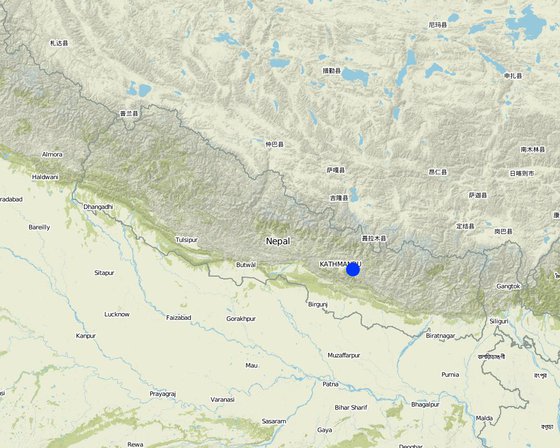

After one year of plantation of mulberry plants. They are ready to be eaten by silkworm. Firstly,silkworm eggs must be stay between 25 to 30 degree celcius. In tray or petric disc. In this area silkworm are brought from khopasi silkworm industry. The larvae must be transfer to clean tray with fresh food. A time came in larveal stag when larvae eats huge amount of mulberry and grow more than 5 cm long . After enough eating, larvae raise their heads as it shows sign for cocoon formation. Then, the worm is kept in another circular bamboo which will make cocoon more uniform in shape and easier to collect silkworm by contracting secrets from from an opening under its mouth a steady stream of liquid silk coated with sericine which dardens on exposure. It takes about twenty-five days to form cocoon.
Purpose of the Technology: The main purpose of planting mulberry plant is for producing silkworm to increases economic condition of farmer.
Establishment / maintenance activities and inputs: For over two years people have been implementing these technology.They took traning from the khopasi silkworm institution.They have get external inputs.While geting training,maintance has been carried out when the plants are not grown enough.While producing the silkworm (larva to coocon) maintaince is carried out as keeping them in clean environment without reaching another species around them.
Natural / human environment: The natural environment is tropical with temperature ranging from 20 to 25°C .The population density is sparse with the community relying heavily on agricultur

Location: Kavre, Chamryang Besi, Nepal
No. of Technology sites analysed:
Spread of the Technology: evenly spread over an area (28.97 km²)
In a permanently protected area?:
Date of implementation: less than 10 years ago (recently)
Type of introduction




| Specify input | Unit | Quantity | Costs per Unit (Nepalese rupee) | Total costs per input (Nepalese rupee) | % of costs borne by land users |
| Labour | |||||
| Bringing plants from Khopasi by men | persons/day | 8.0 | 200.0 | 1600.0 | 100.0 |
| Planting plant | persons/day | 8.0 | 200.0 | 1600.0 | 100.0 |
| Equipment | |||||
| Machine use | unit | 1.0 | 150.0 | 150.0 | 100.0 |
| Plant material | |||||
| Plants | pieces | 400.0 | 0.35 | 140.0 | 100.0 |
| Fertilizers and biocides | |||||
| Compost | unit | 1.0 | 250.0 | 250.0 | 100.0 |
| Total costs for establishment of the Technology | 3'740.0 | ||||
| Total costs for establishment of the Technology in USD | 36.31 | ||||
| Specify input | Unit | Quantity | Costs per Unit (Nepalese rupee) | Total costs per input (Nepalese rupee) | % of costs borne by land users |
| Labour | |||||
| Bringing Silkworm in time of production | worms | 2000.0 | 0.01 | 20.0 | 100.0 |
| Total costs for maintenance of the Technology | 20.0 | ||||
| Total costs for maintenance of the Technology in USD | 0.19 | ||||